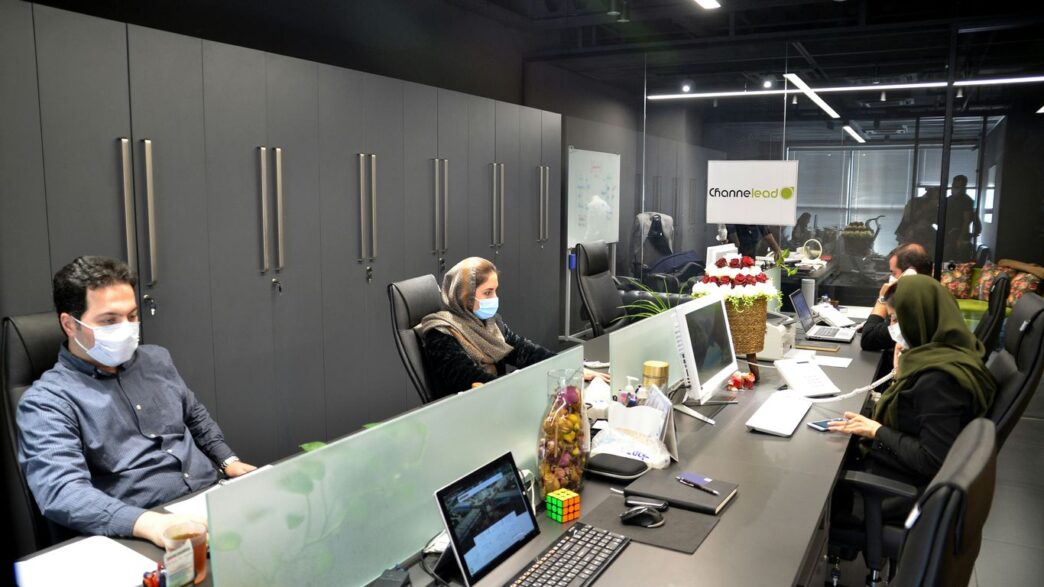So, you’ve got an interview coming up, and you’re wondering about those diversity questions. They pop up a lot these days, and honestly, it’s good to be ready. It’s not just about ticking boxes; companies really want to know if you can work well with all sorts of people and help build a place where everyone feels welcome. Thinking about how to approach answering diversity interview questions is smart. Let’s get into some ways to make sure your answers hit the mark.
Key Takeaways
- Show, don’t just tell: When asked about diversity, share real stories from your past work. Talk about times you worked with different kinds of people or helped make a team more inclusive. Specific examples make your answers much stronger.
- Know what diversity means: Go beyond the usual terms. Explain that diversity includes different viewpoints, backgrounds, and experiences. Show you understand why having different kinds of people on a team is a good thing for innovation and problem-solving.
- Talk about actions, not just ideas: If you’re asked how you’d handle a tricky situation or promote inclusion, give concrete steps. What would you actually *do*? This shows you’re practical and ready to contribute.
- Be honest about bias: Everyone has biases, even if they don’t realize it. Acknowledge this and explain how you work to spot and manage your own biases. Also, be ready to talk about how you’d address bias you see in others or in company processes.
- Connect diversity to results: Explain how you see diversity and inclusion helping the business. Mention how you’d track progress or how having different perspectives leads to better decisions and outcomes.
Understanding The Core Of Diversity Interview Questions
So, you’ve got an interview coming up, and you’re prepping for all the usual stuff. But then you see it on the outline: questions about diversity and inclusion. It can feel a bit like a curveball if you haven’t thought about it. Let’s break down what interviewers are really trying to get at with these questions. It’s not just about checking a box; it’s about seeing if you’ll fit into a workplace that values different people and ideas.
Defining Diversity Beyond Buzzwords
When companies talk about diversity, it’s easy to think of it as just a corporate buzzword. But it’s way more than that. Think about all the different kinds of people who make up our world – different ages, races, genders, abilities, backgrounds, ways of thinking, and life experiences. Diversity is the mix of all these unique individuals. It’s not just about having a few different faces in the room; it’s about recognizing that everyone brings something different to the table. This variety can lead to better problem-solving and more creative ideas. For instance, a team with people who have different educational backgrounds might approach a project from angles no one else considered. It’s about acknowledging and appreciating these differences, not just tolerating them. Understanding this is key to answering questions about how you contribute to a diverse team.
Recognizing The Value Of Varied Perspectives
Why do companies even bother with diversity? Because having people with different viewpoints makes the whole operation stronger. Imagine trying to plan a party and only asking people who like the same kind of music. You’d probably end up with a pretty boring party, right? The same applies to work. When you have people with different life experiences and ways of thinking, they can spot problems you might miss, suggest solutions you wouldn’t have thought of, and generally make decisions more robust. It’s like looking at a problem through multiple lenses instead of just one. This variety helps avoid groupthink, where everyone agrees too easily and misses potential issues. Interviewers want to know if you see this value and how you actively seek out and listen to different opinions, even when they differ from your own. It shows you’re open to learning and improving.
Assessing Commitment To Inclusive Environments
Okay, so we know diversity is about the mix of people. Inclusion is about making sure everyone in that mix feels welcome, respected, and able to do their best work. It’s the active part – making sure those varied perspectives are actually heard and valued. An inclusive environment is one where people feel safe to be themselves, share their ideas without fear of judgment, and have equal opportunities. It’s not enough to just have a diverse team; you have to actively work to make sure everyone feels like they belong. This means creating systems and practices that support everyone, not just the majority. Interviewers ask about this to see if you understand that diversity needs inclusion to truly work. They want to know if you’re someone who helps build that kind of atmosphere, where everyone feels supported and can contribute fully. It’s about creating a place where everyone feels like they’re part of the team’s success.
Showcasing Your Experiences With Diversity
So, you’ve got a handle on what diversity means and why it’s important. That’s great! But now, the interviewer wants to see that you’ve actually lived it. They want to know you’re not just talking the talk, but walking the walk. This is where you bring out your personal stories and examples. Think about times you’ve worked with people who see the world differently than you do, or maybe come from a different background. It’s not always about grand gestures; sometimes it’s the small things that make a big difference.
Sharing Real-Life Team Collaborations
When you’re on a team, everyone brings their own way of thinking. This can be awesome, leading to better ideas, but it can also lead to bumps in the road. The key is showing how you handle those differences to get the job done. Did you ever have a project where people had totally different ideas on how to approach it? Maybe one person was super detail-oriented, while another was more of a big-picture thinker. How did you help bridge that gap? Did you find a way to combine those different strengths? It’s about showing you can help a team work together, even when everyone isn’t on the same page from the start.
Here’s a way to think about it:
- Identify the situation: Briefly describe the project or task and the team involved.
- Highlight the differences: Point out the varied perspectives or working styles present.
- Explain your role: What did you do to help everyone collaborate effectively?
- Describe the outcome: What was the result of your efforts? Did the team succeed?
For instance, you could say, "In my last role, we were developing a new marketing campaign. My team had folks from different departments – sales, product development, and design. Sales was focused on immediate leads, product wanted to highlight technical features, and design was all about aesthetics. It could have easily become a tug-of-war. I made sure to set up a meeting where each person could explain their priorities and concerns. Then, we brainstormed ways to weave all those elements into a cohesive message that appealed to different customer needs. We ended up with a campaign that exceeded our targets because it spoke to everyone."
Illustrating Actions Against Disrespect
Nobody likes seeing someone treated unfairly. If you’ve ever witnessed or experienced a situation where someone was disrespected because of who they are – their background, their beliefs, or anything else – and you stepped in, that’s a powerful story. It doesn’t mean you have to be a superhero; sometimes it’s just speaking up when something doesn’t feel right. Maybe a colleague made a comment that was a bit off, and you gently corrected them or changed the subject to steer the conversation in a more positive direction. Or perhaps you saw someone being excluded from a social gathering and made an effort to include them.
Think about these points:
- What happened? Describe the incident briefly and factually.
- What was your reaction? What did you do or say?
- Why did you act? What was your motivation?
- What was the result? Did your action make a difference?
It’s important to show that you’re not afraid to address issues, but also that you do so thoughtfully. For example, "There was a time when a new team member, who had a strong accent, was repeatedly interrupted during meetings. It seemed like people weren’t giving them a chance to finish their thoughts. I noticed this and started making a point to say, ‘Let’s let [Name] finish their point,’ or I’d ask clarifying questions to show I was listening. Over time, I saw that people started to listen more attentively, and the team member became more confident in sharing their ideas."
Demonstrating Contributions To Inclusion
This is where you show how you’ve actively worked to make a place feel more welcoming for everyone. It’s about going beyond just not being discriminatory; it’s about actively creating an environment where people feel like they belong. Have you ever suggested a new way to onboard new hires that made them feel more connected? Or maybe you helped organize an event that celebrated different cultural holidays? Even small things, like making sure everyone’s voice is heard in a meeting or making an effort to learn about your colleagues’ backgrounds, count.
Consider these examples:
- Initiating a new practice: Did you suggest a new process or activity?
- Participating in existing efforts: Did you get involved in company-wide D&I groups or events?
- Everyday actions: What do you do regularly to make people feel included?
For instance, you might say, "I realized that our team’s social events were always happening during times that made it difficult for some parents to attend. I brought this up with my manager and suggested we rotate the timing of our get-togethers and also offer a virtual option. This way, more people could participate and connect, which I think really helped build stronger relationships across the team."
Articulating Your Strategies For Inclusion
So, you’ve talked about your experiences and shown you get why diversity matters. Now, let’s get down to the nitty-gritty: what are you actually going to do about it? This section is where you lay out your game plan for making inclusion a reality, not just a nice idea. It’s about showing you can move from talking the talk to walking the walk.
Developing Concrete Action Plans
This is where you get specific. Instead of saying ‘I’ll promote inclusion,’ think about what that looks like day-to-day. What are the actual steps you’d take? It’s about creating a roadmap that others can follow. Think about things like:
- Setting clear goals for representation in hiring and promotions. For example, aiming to increase the percentage of underrepresented groups in leadership roles by X% over two years.
- Implementing structured interview processes where all candidates are asked the same core questions, and evaluations are based on predefined criteria to reduce bias.
- Establishing regular check-ins or feedback sessions specifically focused on inclusion, allowing employees to voice concerns or suggestions without fear of reprisal.
Integrating Diversity Into Decision-Making
Inclusion shouldn’t be an add-on; it needs to be woven into the fabric of how the company operates. This means considering diverse perspectives at every stage, from product development to policy creation. How do you make sure different voices are heard when important choices are being made?
- Actively seek out and include input from employees with varied backgrounds and experiences when making significant decisions.
- When reviewing new policies or procedures, ask: ‘Who might be negatively impacted by this, and how can we adjust it?’
- Use data, like employee surveys or demographic breakdowns of project teams, to inform decisions and identify areas needing more inclusive approaches.
Promoting Belonging For All Employees
Creating a sense of belonging goes beyond just having a diverse workforce; it’s about making sure everyone feels valued, respected, and connected. This is where you show you understand the human element of inclusion. What initiatives would you champion to make sure everyone feels like they’re part of the team?
- Support the formation of employee resource groups (ERGs) or affinity groups, providing them with resources and visibility.
- Organize company-wide events or activities that celebrate different cultures and backgrounds, encouraging cross-group interaction.
- Develop mentorship programs that pair employees from different backgrounds or levels, helping to build connections and understanding across the organization.
Addressing Unconscious Bias In The Workplace
Unconscious bias. It’s a tricky thing, isn’t it? We all have it, even if we don’t realize it. These are the mental shortcuts our brains take, based on our backgrounds and experiences, that can sometimes lead us to make unfair judgments without even meaning to. In a professional setting, this can really get in the way of building a fair and inclusive team. The good news is, we can get better at spotting it and dealing with it.
Acknowledging Personal Biases
So, the first step is admitting we’ve got ’em. It’s not about feeling guilty; it’s about being honest with ourselves. Think about it like this: if you’re trying to learn a new skill, you first have to accept that you don’t know it yet, right? Same idea here. We can start by reflecting on our own backgrounds and how they might shape our views. What assumptions do we tend to make? What groups do we find ourselves automatically categorizing?
- Self-Reflection: Take some quiet time to think about your own experiences and how they might influence your perceptions of others. What are your go-to assumptions?
- Seek Feedback: If you have trusted colleagues or mentors, ask them for honest feedback on your interactions. Sometimes an outside perspective is exactly what we need.
- Education: Read articles, listen to podcasts, or attend workshops that talk about different types of unconscious bias. The more you know, the easier it is to spot them in yourself and others.
Responding To Observed Bias
Okay, so you’ve noticed something that seems a bit off – maybe a comment that felt exclusionary or a decision that seemed to favor one group over another. What do you do? It can feel awkward to speak up, but it’s important. Your willingness to address bias, even when it’s uncomfortable, shows a real commitment to fairness.
Here’s a way to think about it:
- Assess the Situation: Is this a one-off comment, or part of a pattern? Who is involved? What’s the potential impact?
- Choose Your Approach: Sometimes a quiet, private conversation is best. Other times, especially if it’s a public comment or a systemic issue, a more direct approach might be needed.
- Focus on Behavior, Not Character: Instead of saying
Highlighting Leadership In Diversity Initiatives
When it comes to diversity and inclusion, leadership really sets the tone. It’s not just about having policies; it’s about actively showing you’re committed to making things better. This means being the person who speaks up, who pushes for change, and who helps others see the value in different viewpoints. Showing you can lead these efforts is a big deal for employers.
Championing D&I From Within
This is where you talk about how you’ve been a go-to person for diversity and inclusion, even if it wasn’t your official job title. Think about times you noticed something wasn’t quite right and you took steps to fix it. Maybe you saw that a certain group of employees wasn’t getting the same opportunities, or perhaps there was a lack of understanding about different cultures. You could have suggested new ways to approach hiring, like making initial candidate screening a blind screening, to cut down on bias. Or maybe you helped start an employee resource group, giving people a space to connect and feel supported. It’s about being proactive and making inclusion a part of your everyday work.
Influencing Leadership Buy-In
Getting leaders on board with diversity and inclusion can be tough. They’re busy, and sometimes they need to see the practical benefits. You’ll want to share examples of how you’ve convinced leaders to support D&I initiatives. This might involve using data to show how diverse teams perform better, or how a more inclusive environment can improve employee morale. For instance, you could explain how you presented information on employee satisfaction scores for different groups and proposed actions to improve them. Sometimes it’s about listening to their concerns and finding common ground, maybe even securing a budget for new programs. It’s about showing them why D&I isn’t just a nice-to-have, but a business imperative.
Measuring the Impact of D&I Programs
It’s not enough to just start diversity programs; you need to know if they’re actually working. This is where data comes in. You should be ready to talk about how you’ve tracked the results of D&I efforts. This could involve looking at things like:
- Representation of different groups in leadership roles.
- Employee feedback surveys, especially from underrepresented groups.
- Retention rates across various demographics.
For example, you might have used specific tools to gather insights on how inclusive the workplace felt for everyone. Then, you used that information to make adjustments to existing programs or create new ones. Showing that you can measure success and adapt based on results demonstrates a serious commitment to making real change. You can find more information on effective diversity interview questions that can help assess these leadership qualities.
Navigating Challenges In Diversity And Inclusion
Look, let’s be real. Talking about diversity and inclusion is one thing, but actually making it work in a real company? That’s where things get tricky. It’s not always smooth sailing, and you’re bound to run into some bumps along the way. The key is knowing how to handle those bumps without giving up.
Acknowledging Implementation Hurdles
Sometimes, the best ideas just don’t translate perfectly from paper to practice. Maybe your company rolled out a new mentorship program, but participation from certain groups was way lower than expected. Or perhaps a new policy meant to support working parents ended up creating more paperwork than actual flexibility. It’s important to be able to point out these kinds of real-world problems. Don’t pretend everything is perfect if it’s not. Instead, show you understand that change takes time and effort, and that initial plans might need tweaking. For instance, you might say, "We noticed that our initial outreach for the employee resource groups didn’t quite reach everyone, so we’re now partnering with internal communication channels that have broader reach." It’s about being honest about the difficulties while still showing a commitment to finding solutions.
Demonstrating Resilience In Overcoming Resistance
Not everyone is going to jump on the diversity and inclusion bandwagon immediately. You might encounter people who are skeptical, resistant, or just plain don’t see the point. This is where you need to show you can handle that pushback. Think about a time you had to convince a colleague or a team to try a new approach that was more inclusive. How did you do it? Did you present data? Did you share personal stories? Did you find common ground? For example, you could describe how you addressed a team’s concerns about a new hiring process designed to reduce bias. You might explain, "Some team members were worried it would slow things down, so I shared research on how diverse teams actually make better decisions faster in the long run, and we agreed to pilot it with one department first to show them the benefits firsthand."
Learning From Complex Situations
Sometimes, diversity and inclusion issues can get pretty complicated. You might have a situation where two employees from different backgrounds have a conflict, and it’s not immediately clear if it’s a personality clash or if there are underlying cultural misunderstandings. Or maybe a company-wide initiative meant to celebrate different holidays inadvertently made some employees feel excluded. When asked about these kinds of tough spots, focus on what you learned. What steps did you take? What was the outcome? Most importantly, what would you do differently next time? It shows maturity and a commitment to continuous improvement. You could say, "In a past situation where a cultural misunderstanding led to tension, I learned the importance of facilitating open dialogue early on. We brought in a neutral facilitator to help both parties express their perspectives, and it highlighted the need for more cross-cultural awareness training for the whole team, which we then implemented."
Wrapping It Up
So, we’ve talked about why diversity matters in the workplace and how to handle those interview questions that come up. It’s not about having perfect, rehearsed answers. It’s more about being real, sharing your actual experiences, and showing that you get what it means to have different people and ideas working together. Remember to think about your own experiences, whether it’s working on a team with folks from different backgrounds or speaking up when something didn’t seem right. Being honest and showing you’ve thought about these things will go a long way. Keep these ideas in mind, and you’ll be in a much better spot to show interviewers what you bring to the table. Good luck out there!
Frequently Asked Questions
What exactly does ‘diversity’ mean in a job interview?
Diversity in an interview means talking about how different people, with all sorts of backgrounds and ideas, can work together. It’s not just about race or gender, but also about different life experiences, ways of thinking, and skills. Companies want to know you understand and value these differences.
Why do employers ask about diversity?
Employers ask about diversity because they know that having a team with different viewpoints makes the company stronger. It can lead to more creative ideas, better problem-solving, and a workplace where everyone feels like they belong. They want to see if you can help build that kind of environment.
How can I share my experiences with diversity?
Think about times you’ve worked with people who are different from you. Did you help a team member who was struggling? Did you learn something new from someone with a different background? Share these real stories. It shows you’ve actually lived these experiences, not just read about them.
What if I haven’t had many chances to work with diverse groups?
It’s okay! Be honest. You can talk about how you *would* approach working with diverse people, or how you value learning from others. You can also mention times you’ve shown respect for differences, even in small ways. The key is to show you’re open and willing to learn.
How do I talk about unconscious bias?
Unconscious bias means having hidden beliefs that can unfairly affect how we treat people. To talk about it, admit that everyone has biases. Then, share how you try to be aware of your own biases and how you work to make fair decisions, like double-checking your first impressions or seeking different opinions.
What’s the best way to show I’m committed to inclusion?
Show, don’t just tell. Talk about specific actions you’ve taken or would take. This could be suggesting ways to make meetings more inclusive, speaking up when you see unfairness, or actively seeking out different viewpoints. It’s about demonstrating that you care and take action.














